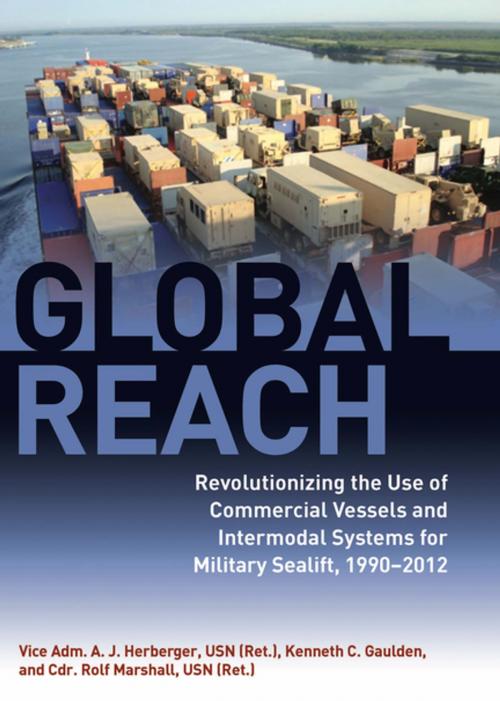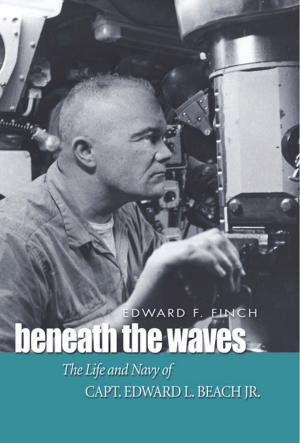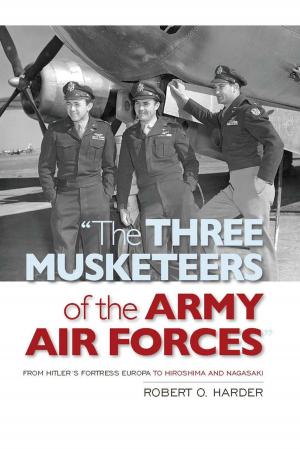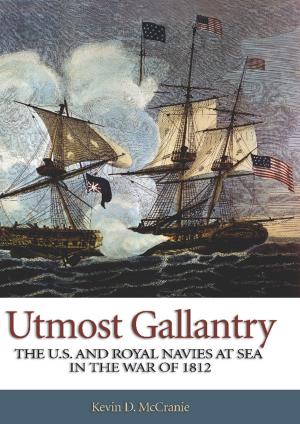Global Reach
Revolutionizing the Use of Commercial Vessels and Intermodal Systems for Military Sealift, 19902012
Nonfiction, History, Military, Naval| Author: | A.J. Herberger, Ken Gaulden, Rolf Marshall | ISBN: | 9781612518565 |
| Publisher: | Naval Institute Press | Publication: | December 15, 2015 |
| Imprint: | Naval Institute Press | Language: | English |
| Author: | A.J. Herberger, Ken Gaulden, Rolf Marshall |
| ISBN: | 9781612518565 |
| Publisher: | Naval Institute Press |
| Publication: | December 15, 2015 |
| Imprint: | Naval Institute Press |
| Language: | English |
Global Reach presents a unique view of the fiscal constraints facing the Department of Defense and the U.S. Government. It calls for U.S. policymakers and the general public to understand the message within the book. With this understanding, the United States will ensure its future ability to acquire and maintain the sealift capability to respond to these challenges in the years to come.
The twenty years following the Persian Gulf Conflict (1990-91) saw a revolution in the means by which the United States military deploys and sustains U.S. armed forces worldwide during contingencies. Historically, 95 percent of the equipment and supplies our military needs to fight and win in combat are delivered by ship. That remains true today. What has changed is how those cargoes are delivered in theater. For almost as long as nations sought to deploy military forces by sea, they relied on commercial Ships Taken Up From Trade” to meet those needs.
This changed for the United States with the global conflicts of the twentieth-century. With millions of troops deployed oversea and the need to simultaneously supply allied nations with tools of war and food and supplies for their civil economies, the need for sealift exceeded what the commercial fleet could supply. For the First and Second World Wars, America’s mobilization including the construction of thousands of government-owned merchant type ships for sealift. This Government-owned fleet model remained the general practice after 1945 as U.S. forces during both the Korean and Vietnam conflicts were in large part deployed and supplied by the same ships as had supported the Allied victories in Europe and the Pacific.
The Persian Gulf Conflict signaled a need for change. Not only had the nature of the conflicts changed, but so too had the commercial maritime industry in the United States and worldwide. Working in close cooperation with its commercial industry partners, including carriers and maritime labor, the U.S. military over the next decade revolutionized the use of commercial vessels and intermodal systems for military sealift. By 2002, the then Commander of the U.S. Transportation Command, General John W. Handy, USAF, in testimony before the U.S. Congress stated that [w]e simply cannot, as a nation, fight the fight without the partnership of the commercial maritime industry.” By 2009-10, not only was 95 percent of all equipment and supplies required by U.S. forces in Iraq and Afghanistan still being delivered by ship, but over 90 percent of those cargoes were being transported by United States-flag commercial vessels and U.S. citizen crews in regular commercial liner services.
This is the story of that revolution in military sealift.
The twenty years following the Persian Gulf Conflict (1990-91) saw a revolution in the means by which the United States military deploys and sustains U.S. armed forces worldwide during contingencies. Historically, 95 percent of the equipment and supplies our military needs to fight and win in combat are delivered by ship. That remains true today. What has changed is how those cargoes are delivered in theater. For almost as long as nations sought to deploy military forces by sea, they relied on commercial Ships Taken Up From Trade” to meet those needs.
This changed for the United States with the global conflicts of the twentieth-century. With millions of troops deployed oversea and the need to simultaneously supply allied nations with tools of war and food and supplies for their civil economies, the need for sealift exceeded what the commercial fleet could supply. For the First and Second World Wars, America’s mobilization including the construction of thousands of government-owned merchant type ships for sealift. This Government-owned fleet model remained the general practice after 1945 as U.S. forces during both the Korean and Vietnam conflicts were in large part deployed and supplied by the same ships as had supported the Allied victories in Europe and the Pacific.
The Persian Gulf Conflict signaled a need for change. Not only had the nature of the conflicts changed, but so too had the commercial maritime industry in the United States and worldwide. Working in close cooperation with its commercial industry partners, including carriers and maritime labor, the U.S. military over the next decade revolutionized the use of commercial vessels and intermodal systems for military sealift. By 2002, the then Commander of the U.S. Transportation Command, General John W. Handy, USAF, in testimony before the U.S. Congress stated that [w]e simply cannot, as a nation, fight the fight without the partnership of the commercial maritime industry.” By 2009-10, not only was 95 percent of all equipment and supplies required by U.S. forces in Iraq and Afghanistan still being delivered by ship, but over 90 percent of those cargoes were being transported by United States-flag commercial vessels and U.S. citizen crews in regular commercial liner services.
This is the story of that revolution in military sealift.
Global Reach presents a unique view of the fiscal constraints facing the Department of Defense and the U.S. Government. It calls for U.S. policymakers and the general public to understand the message within the book. With this understanding, the United States will ensure its future ability to acquire and maintain the sealift capability to respond to these challenges in the years to come.
The twenty years following the Persian Gulf Conflict (1990-91) saw a revolution in the means by which the United States military deploys and sustains U.S. armed forces worldwide during contingencies. Historically, 95 percent of the equipment and supplies our military needs to fight and win in combat are delivered by ship. That remains true today. What has changed is how those cargoes are delivered in theater. For almost as long as nations sought to deploy military forces by sea, they relied on commercial Ships Taken Up From Trade” to meet those needs.
This changed for the United States with the global conflicts of the twentieth-century. With millions of troops deployed oversea and the need to simultaneously supply allied nations with tools of war and food and supplies for their civil economies, the need for sealift exceeded what the commercial fleet could supply. For the First and Second World Wars, America’s mobilization including the construction of thousands of government-owned merchant type ships for sealift. This Government-owned fleet model remained the general practice after 1945 as U.S. forces during both the Korean and Vietnam conflicts were in large part deployed and supplied by the same ships as had supported the Allied victories in Europe and the Pacific.
The Persian Gulf Conflict signaled a need for change. Not only had the nature of the conflicts changed, but so too had the commercial maritime industry in the United States and worldwide. Working in close cooperation with its commercial industry partners, including carriers and maritime labor, the U.S. military over the next decade revolutionized the use of commercial vessels and intermodal systems for military sealift. By 2002, the then Commander of the U.S. Transportation Command, General John W. Handy, USAF, in testimony before the U.S. Congress stated that [w]e simply cannot, as a nation, fight the fight without the partnership of the commercial maritime industry.” By 2009-10, not only was 95 percent of all equipment and supplies required by U.S. forces in Iraq and Afghanistan still being delivered by ship, but over 90 percent of those cargoes were being transported by United States-flag commercial vessels and U.S. citizen crews in regular commercial liner services.
This is the story of that revolution in military sealift.
The twenty years following the Persian Gulf Conflict (1990-91) saw a revolution in the means by which the United States military deploys and sustains U.S. armed forces worldwide during contingencies. Historically, 95 percent of the equipment and supplies our military needs to fight and win in combat are delivered by ship. That remains true today. What has changed is how those cargoes are delivered in theater. For almost as long as nations sought to deploy military forces by sea, they relied on commercial Ships Taken Up From Trade” to meet those needs.
This changed for the United States with the global conflicts of the twentieth-century. With millions of troops deployed oversea and the need to simultaneously supply allied nations with tools of war and food and supplies for their civil economies, the need for sealift exceeded what the commercial fleet could supply. For the First and Second World Wars, America’s mobilization including the construction of thousands of government-owned merchant type ships for sealift. This Government-owned fleet model remained the general practice after 1945 as U.S. forces during both the Korean and Vietnam conflicts were in large part deployed and supplied by the same ships as had supported the Allied victories in Europe and the Pacific.
The Persian Gulf Conflict signaled a need for change. Not only had the nature of the conflicts changed, but so too had the commercial maritime industry in the United States and worldwide. Working in close cooperation with its commercial industry partners, including carriers and maritime labor, the U.S. military over the next decade revolutionized the use of commercial vessels and intermodal systems for military sealift. By 2002, the then Commander of the U.S. Transportation Command, General John W. Handy, USAF, in testimony before the U.S. Congress stated that [w]e simply cannot, as a nation, fight the fight without the partnership of the commercial maritime industry.” By 2009-10, not only was 95 percent of all equipment and supplies required by U.S. forces in Iraq and Afghanistan still being delivered by ship, but over 90 percent of those cargoes were being transported by United States-flag commercial vessels and U.S. citizen crews in regular commercial liner services.
This is the story of that revolution in military sealift.















